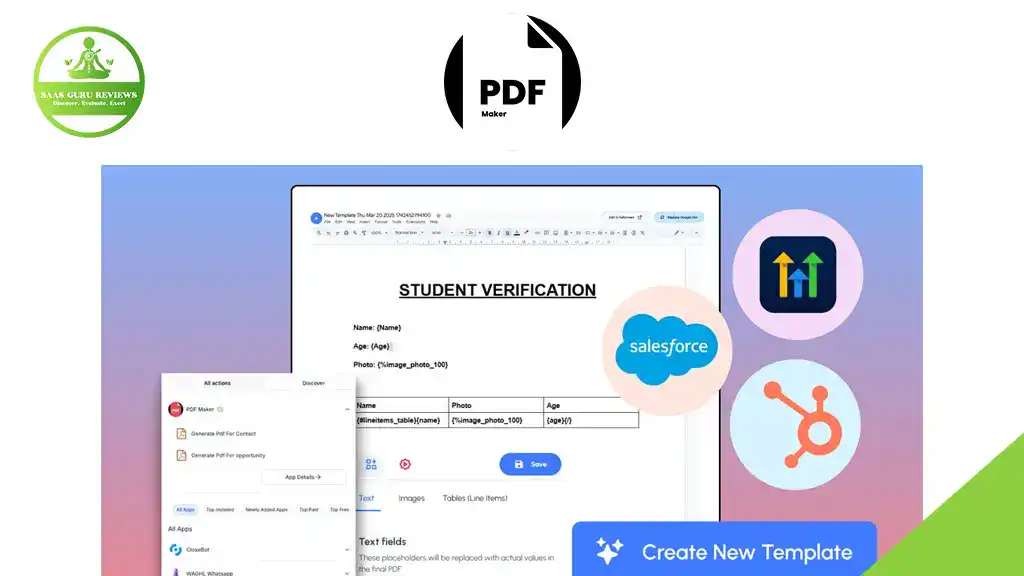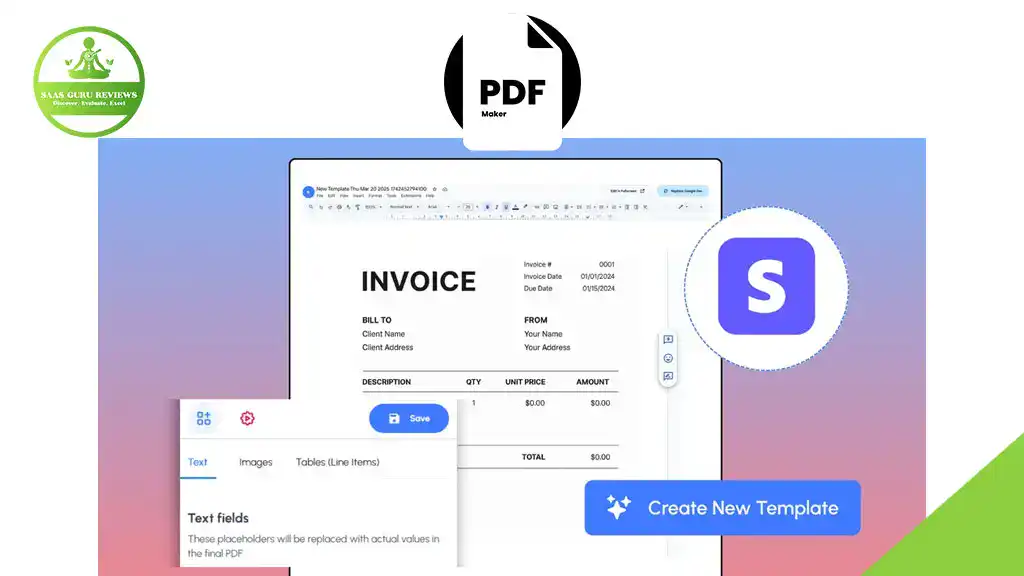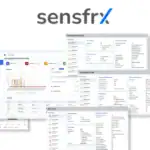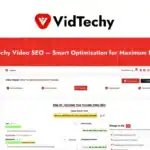Are you tired of manually creating PDFs for your business? Looking for a way to automate document generation and streamline your workflow? This comprehensive guide explores the world of PDF automation platforms, helping you understand how to create professional PDFs efficiently while saving time and resources. From basic features to advanced integration capabilities, we’ll cover everything you need to know about modern PDF generation tools that can transform your document creation process.
What is Automated PDF Generation and Why Your Business Needs It
PDF generation automation is revolutionizing how businesses handle documentation. At its core, automated PDF generation allows companies to create documents without manual intervention, pulling data from various sources to populate templates. This technology has become essential for businesses looking to streamline their document creation process while maintaining consistency and professionalism.
The need for efficient document workflows continues to grow as businesses expand their digital operations. According to recent statistics from Seodity, platforms focused on PDF automation are seeing significant traffic growth, with some reaching over 416.07K monthly visitors. This trend highlights the increasing demand for tools that can transform raw data into polished, professional PDFs. The founder of one such platform, Chirag Gupta, recognized this need when launching his PDF automation service in 2023, creating a solution that bridges the gap between data management and document presentation.
The Evolution of PDF Maker Platforms in Business
PDF maker platforms have evolved significantly from simple conversion tools to comprehensive document generation ecosystems. The journey began with basic PDF creators that merely converted existing documents into the PDF format. Today’s platforms offer robust features that integrate with various data sources, allowing for real-time document generation that reflects the most current information.
The modern PDF generation platform serves as a central hub for document automation, connecting with tools like Airtable, databases, and other business applications. This evolution has been driven by the need for businesses to create personalized documents at scale without sacrificing quality or consistency. The domain for many of these platforms was purchased relatively recently, with some like Chirag Gupta’s service only dating back to 2023, yet they’ve quickly become essential tools for businesses of all sizes. For the most up-to-date features, you can check their Last Update page which details the continuous improvements being made to enhance the user experience.

Key Features of Comprehensive PDF Generation Tools
Modern PDF generation platforms come equipped with a variety of features designed to make document creation as seamless as possible. These tools typically offer template libraries, data integration capabilities, and customization options that allow businesses to create professional documents that align with their branding guidelines.
One of the most valuable features is the ability to pull data from multiple sources, including Airtable, spreadsheets, and databases. This integration capability ensures that documents contain accurate, up-to-date information without requiring manual data entry. Additionally, many platforms provide conditional formatting options, allowing for dynamic document generation based on specific criteria. The comprehensive nature of these tools makes them suitable for various use cases, from generating invoices and reports to creating personalized marketing materials. According to their website the pdf maker, their platform processes thousands of document generation requests daily, demonstrating the robust infrastructure supporting these services. Their YouTube channel the pdf maker YouTube offers numerous tutorials on maximizing these features, while their Facebook community provides user support and feature discussions.
How to Automate Document Creation with No-Code Solutions
The rise of no-code platforms has democratized PDF automation, making it accessible to users without programming expertise. These user-friendly tools employ visual interfaces that allow users to design templates, establish data connections, and set up automation rules through simple drag-and-drop functionality.
To automate document creation using a no-code PDF maker platform, start by selecting or creating a template that matches your requirements. Next, connect your data sources, whether they’re Airtable bases, spreadsheets, or other databases. Then, map the fields from your data source to the corresponding elements in your template. Finally, set up triggers that will generate PDFs automatically when certain conditions are met, such as when a new record is added or when a form is submitted. This simple process eliminates the need for manual document creation while ensuring consistency across all generated PDFs. The platform’s pricing pages www.example.com/pricing typically offer various plans to accommodate different business needs, from free basic options to enterprise-level solutions with advanced features.
Integrating PDF Generation with Airtable and Other Data Sources
Airtable has become a popular data management tool for many businesses, and integrating it with PDF generation platforms creates a powerful document automation system. This integration allows companies to maintain their data in Airtable while automatically generating professional PDFs whenever needed.
The process of connecting Airtable with a PDF maker platform typically involves establishing an API connection that allows the platform to access and pull data from specific Airtable bases. Once connected, users can map Airtable fields to elements in their PDF templates, ensuring that information flows seamlessly from the database to the document. This integration is particularly valuable for businesses that regularly generate reports, invoices, or personalized marketing materials based on data stored in Airtable. According to their roadmap www.example.com/roadmap, future updates will include deeper integration with additional data sources beyond Airtable, expanding the platform’s versatility for diverse business needs.
Best Practices for Professional PDF Design and Generation
Creating professional PDFs involves more than just automating the generation process; it requires attention to design principles and document structure. Well-structured documents not only look more professional but also improve readability and user experience.
When designing PDF templates, consider using consistent branding elements, including logos, colors, and fonts that align with your company’s visual identity. Organize information logically, using headings, subheadings, and appropriate spacing to guide the reader through the document. Include dynamic elements such as page numbers, dates, and conditional sections that adapt based on the data being used. Test your templates thoroughly with various data sets to ensure they handle different scenarios correctly. Following these best practices will help you generate professional PDFs that enhance your business’s reputation and effectively communicate information to your audience.

Comparing Free vs. Paid PDF Generation Platforms
The market offers both free and paid PDF generation platforms, each with its own set of features and limitations. Understanding the differences can help businesses choose the solution that best meets their needs without overspending or underinvesting.
Free PDF generation tools typically provide basic features such as simple template creation and limited document generation capabilities. They may restrict the number of PDFs you can generate monthly or place watermarks on the documents. In contrast, paid platforms offer more comprehensive features, including advanced template design options, integration with multiple data sources, conditional formatting, and higher generation limits. They also provide better support, with some offering 24/7 assistance to address any issues that arise. When choosing between free and paid options, consider your business’s volume of document generation, complexity of templates, and integration requirements. The platform founded by Chirag Gupta offers a transparent pricing structure that scales with business needs, making it accessible for startups while providing the robust features required by larger enterprises.
Advanced PDF Automation: API Tools and Integration Solutions
For businesses with complex document generation needs, API-based PDF automation offers unparalleled flexibility and power. These solutions allow for seamless integration with existing business systems and workflows, enabling truly automated document processes.
API tools for PDF generation provide programmatic access to document creation capabilities, allowing developers to incorporate PDF generation into custom applications or workflows. These integrations can trigger document creation based on specific events, such as when a customer completes a purchase or when a project reaches a certain milestone. The API approach also enables more complex data transformations and document structures than what might be possible with standard no-code interfaces. For businesses with unique requirements or high-volume document generation needs, API-based solutions offer the perfect balance of customization and automation. According to website traffic data from SEO tools, platforms offering API integration capabilities tend to see higher engagement rates, with users spending an average of 416.07 seconds per session exploring these advanced features.
Real-Time Document Generation for Business Reporting
Real-time reporting has become essential for businesses making data-driven decisions, and PDF generation platforms are adapting to meet this need. These tools now enable the creation of up-to-the-minute reports that reflect the most current business data.
Real-time document generation connects directly to live data sources, pulling the most recent information whenever a report is generated. This capability is particularly valuable for businesses that need to share regular updates with stakeholders, clients, or team members. Instead of manually creating reports at set intervals, companies can set up automated generation triggers that produce fresh reports on demand or according to a schedule. The resulting PDFs contain accurate, current information presented in a professional format, saving time while improving the quality and timeliness of business reporting. The platform’s documentation, last updated in early 2024, provides detailed tutorials on setting up real-time reporting workflows that transform raw data into actionable business intelligence.
Transforming Data into Personalized Customer Documents
Personalization has become a key differentiator in customer communications, and PDF generation platforms excel at transforming data into highly personalized documents. This capability allows businesses to create custom proposals, quotes, and marketing materials tailored to individual customer needs.
The process begins with establishing a template that includes both static elements and dynamic fields that will be populated with customer-specific information. By connecting to CRM systems or other customer databases, PDF generation platforms can automatically pull relevant data such as contact information, purchase history, and preferences. This data is then used to populate the template, creating a document that speaks directly to the customer’s situation and needs. The ability to generate personalized PDFs at scale enables businesses to provide a customized experience without the time investment traditionally required for such personalization. According to Chirag Gupta, founder of the platform, “Personalization at scale was once a contradiction in terms, but modern PDF automation has made it not only possible but straightforward.”
Future Trends in PDF Generation and Document Automation
The field of PDF generation continues to evolve, with emerging technologies shaping the future of document automation. Understanding these trends can help businesses stay ahead of the curve and make informed decisions about their document processes.
Artificial intelligence and machine learning are beginning to play larger roles in document generation, enabling more intelligent data extraction, content suggestions, and template optimization. Integration with blockchain technology is emerging as a solution for creating verifiable documents with enhanced security features. Mobile-first generation capabilities are expanding, allowing businesses to create and distribute PDFs directly from mobile devices. Additionally, enhanced collaboration features are being developed to facilitate team input on document templates and approval workflows. As these technologies mature, we can expect PDF generation platforms to become even more powerful tools for business communication and documentation. The platform’s roadmap indicates plans to incorporate AI-driven template suggestions and automated content optimization in upcoming releases, further streamlining the document creation process.
Summary: Key Takeaways for Effective PDF Automation
-
Choose the right platform: Select a PDF generation tool that aligns with your business needs, considering factors like volume, complexity, and integration requirements.
-
Design professional templates: Create well-structured templates with consistent branding to ensure your automated documents maintain a professional appearance.
-
Integrate with data sources: Connect your PDF maker platform with Airtable and other data sources to eliminate manual data entry and ensure accuracy.
-
Implement automation triggers: Set up conditions that automatically generate PDFs when specific events occur, streamlining your document workflows.
-
Utilize personalization features: Leverage dynamic content capabilities to create customized documents that resonate with individual recipients.
-
Consider API integration: For complex needs, explore API-based solutions that offer greater flexibility and integration possibilities.
-
Follow best practices: Adhere to document design principles and regularly test your templates with various data scenarios.
-
Stay current with trends: Keep an eye on emerging technologies in the PDF automation space to maintain competitive advantage.
-
Scale your solution: Start with basic automation and gradually implement more advanced features as your comfort level and needs grow.
-
Measure the impact: Track time savings and error reduction to quantify the benefits of your PDF automation implementation.



